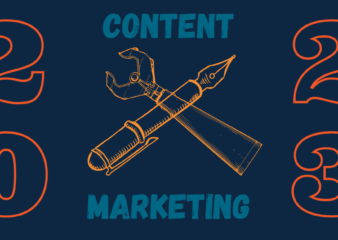The marketing funnel routes a customer’s journey from the moment they learn about a business to when they become a paying customer.
There is no universally accepted path down the marketing funnel, but most marketers use the top of the funnel to focus on brand awareness to attract their target audience, the middle of the funnel to showcase their product as the right solution for potential customers’ problems, and the bottom of the funnel to give potential customers a compelling reason or final “push” to make the purchase.
While each aspect of the marketing funnel is key to converting customers, the conversion process wouldn’t be possible without one crucial part: the top of the funnel.
What is top-of-the-funnel marketing?
Top-of-the-funnel or upper-funnel marketing is a tactic for exposing your target audience to your offering through brand awareness. During this stage, your potential customers will get to know you and how your product or service can solve their problems on a broad level.
Additionally, top-of-the-funnel marketing allows you to gather valuable information about your target audience — such as what topics they care about and where they are going to have conversations about their problems — to create customer personas that drive your strategy.
This brand discovery process happens through a variety of channels and tactics, including:
- Websites and blogs
- Online ads
- Social media accounts
- Search engine optimization
- Video marketing
- Influencer promotion and outreach
- Etc.
What are the common goals of top-of-the-funnel marketing?
When it comes to marketing at the top of the funnel, there are two main goals marketers focus on, including:
- Brand Awareness – How familiar and easily recognizable your brand is to your target audience? Brand awareness begins to foster brand trust among your potential customers and allows them to make direct associations when dealing with a problem that your product or service solves.
- Demand Generation – All top-of-the-funnel marketing programs that get your target audience excited about your product or service. Demand generation allows you to lay the foundation for long-term customer relationships through multiple strategic, targeted touchpoints. These include tactics like blogging, hosting webinars, email marketing, or responding to potential customers on social media channels.
From creating captivating, memorable experiences to evoking an emotional response, top-of-the-funnel marketing tactics are intended to showcase your unique value proposition and attract new customers.
“Top-of-the-funnel marketing has downstream impact on other ‘direct response’ channels. Implied attribution matters when viewing the ‘success’ of top-of-the-funnel marketing tactics. For example, doing a video marketing campaign can increase the amount of branded searches which impacts organic and branded search performance.” – Melissa McKay, Booyah’s Director of Display.
6 Marketing Funnel Metrics That Showcase ROI
It’s important to have key metrics identified for measuring the success of top-of-the-funnel marketing tactics. For example, the more relevant visitors you attract to your website with engaging blog content at the top of the funnel, the more effective your retargeting efforts will be lower down in the funnel.
Fortunately, there are a few metrics you can monitor that will help you uncover the value of your top-of-the-funnel strategy, including:
Impressions
When it comes to top-of-the-funnel marketing, the most basic measurement of brand exposure is impressions. Impressions are the total number of times your ad or post is served to users on screens. For example, if your ad was served to users a total of 1,000 times on Facebook, Twitter, or Instagram, that would mean it received 1,000 impressions.
Impressions are a base requirement of building brand awareness; if your uninitiated audience doesn’t see your ads or content, they are far less likely to know about your brand. If your goal is brand awareness, you’ll want to focus on achieving a low cost-per-thousand-impressions (CPM) among your target audience. You could then measure this against an ad’s clickthrough rate and your cost-per-click (CPC) to uncover insights on how an ad or campaign performs.
Reach
Reach refers to the total number of unique people that your ad has been served to across various digital platforms.
Much like impressions, reach can be used to understand the performance of your marketing campaigns. If your ads reach a wide audience but don’t convert any users into customers, that’s a sign that you’ll want to make changes to improve performance, or perhaps concentrate your efforts on the audiences that, based on data, have a higher likelihood to engage with your ads.
Website Traffic
Website traffic is one of the most important metrics you can use to measure your top-of-the-funnel marketing strategy’s success. Be aware, though, that based on industry-standard measurement and attribution (i.e., third-party cookies), an increase in web traffic that’s linked to upper-funnel marketing may be attributed to other lower-funnel, direct response channels. With these current attribution norms in place, it’s important to bear implied attribution in mind and analyze for less-obvious correlations to determine if the increase in website traffic is linked to any top-of-the-funnel tactics (especially off-site tactics like video marketing).
In Google Analytics, website traffic is broken into two core categories: users and sessions. Users represent unique visitors that visited your site once during a particular time frame. For example, if a user visits your site every day for an entire month, they would be counted as one unique user for that time frame. On the other hand, sessions count each time a user visits your website (after 30 minutes of on-site inactivity), regardless of whether they are new or not.
Brand Lift
While not immediately representative of direct action, brand lift is an important metric to consider when measuring your top-of-the-funnel marketing strategy. Normally measured via digital surveys, brand lift demonstrates a positive shift in how your target audience perceives your brand.
With brand lift surveys implemented into your YouTube campaigns, Facebook campaigns, and more, you can see how your advertising strategies are affecting brand perception in real-time. However, another easy and free way to see brand lift is Google Trends (assuming there is enough search data). Simply plug in your brand name or branded products and see if there is an increase in search interest.
Average Time on Page
In Google Analytics, average time on page measures how much time visitors are spending on a page on average. This metric helps you understand how your website visitors are engaging and interacting with your site and content. A higher average time on page shows the audience is really engaging with that piece of content (and may be more interested in your offering).
Bounce Rate
Bounce rate shows the percentage of users who viewed one page of your website and then left without performing any further action. In Google Analytics, this is measured by single-page sessions divided by the total number of all sessions.
Bounce rate can be a clear indicator of how your potential customers are engaging with or interacting with content like a blog, landing page, or product description page on your site. If your pages are uninteresting, provide a poor user experience, or aren’t relevant, users will likely exit your site without interacting with the site in any other way.
A healthy bounce rate differs depending on the type of content, but in general, we consider a bounce rate healthy if it’s somewhere between 30% and 70%, largely dependent on your own historical site metrics.
Prove Your Top-of-the-Funnel Marketing Strategies Today
Proving ROI for your top-of-the-funnel marketing strategies is more important than ever — as investing in brand awareness and demand generation efforts is key to building lasting customer relationships and driving conversions.
Still having a challenging time using these metrics to prove ROI early in the funnel? Get in touch with Booyah today to discuss how we can help you build your brand and drive results with full-funnel strategies online.

